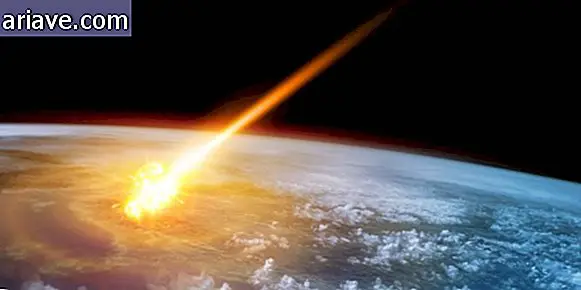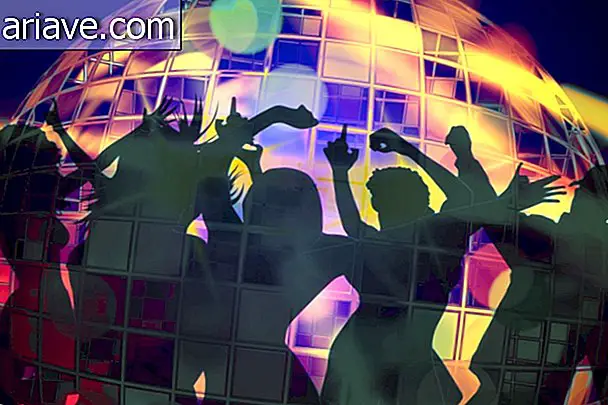Do you know what happens during an atomic explosion?
We at Mega Curioso have spoken here on numerous occasions about nuclear bombs, creepy tests and atomic explosions that have entered history. By the way, the only detonations that actually happened during a real conflict were those of Hiroshima and Nagasaki, just over 70 years ago, with power of 16 and 21 kilotons, respectively, resulting in an estimated total death toll of 129, 000 and 246 thousand people.
Were you impressed by the number of victims above? For these were the people who perished only during the bomb blasts - and do not include those who died later from the devastating effects of radiation exposure!
Most worryingly, there are currently about 15, 000 nuclear warheads in the world - most considerably larger and more powerful than those that exploded over Japan in World War II. So what could we expect if, unfortunately, a new global conflict began and enemy countries began dropping atomic bombs against each other? The AsapSCIENCE people explained everything in an interesting animation. Look:
* You can enable automatic subtitle translation in the video menu.
Nuclear war
According to the animation above, the impact of a single nuclear bomb depends on several factors, such as the weather, the time of day the projectile was detonated, the geographical features of the site, whether the explosion occurred in the air or after impacting. the soil etc. However, regardless of these factors, one thing is common knowledge: about 35% of the energy released in detonation happens in the form of thermal radiation - that is, in the form of heat.

As thermal radiation travels at approximately the speed of light, the first thing that would strike someone near the blast site would be an intense flash of light and heat, and the brightness would be sufficient to cause temporary blindness by glare. But that would be just the beginning ...
1 megaton
Considering the explosion of a 1-megaton bomb - that is, a bomb about 80 times more powerful than the one that exploded over Hiroshima - anyone up to 21 kilometers away would suffer blindness if the detonation occurred during the day - and if the explosion occurred at night, people 85 kilometers away could have their vision blurred.

With regard to heat, of course, proximity to the blasting site would be an important factor. Thus, people 11 kilometers away would suffer first degree burns; second degree 10 km from the blast site; and third degree from the 8 kilometers. In addition, those with third-degree burns on more than 24 percent of their body would likely die if they did not receive medical attention immediately.
The channel people explained that the distances above are variable and depend on the factors they mentioned at the beginning of the animation. However, the color of the clothing may have some influence, as white clothing could reflect some of the energy, while black would absorb more of the heat released. But bad luck - or not, depending on how you consider the whole experience - would have been at the center of the blast.
The temperature at the place where the Hiroshima bomb exploded was estimated at 300, 000 degrees Celsius, which is 300 times higher than that applied during human cremation. This means that people near the point where the bomb was detonated were reduced to ashes almost instantly. But it wasn't just the extreme heat that killed the people closest to the detonation. Look:

According to the animation, most of a nuclear bomb's energy is released in the blast, causing air to move rapidly from the blast site. This creates sudden variations in atmospheric pressure which, in turn, can lead to the destruction of houses and buildings. In the case of the 1-megaton bomb, the shockwaves would produce 180 tons of force on structures with up to two floors and winds of 255 km / h within 6 kilometers of the blast.

Within a radius of one kilometer, the pressure would be four times higher, and the winds could exceed 750 km / h. In fact, humans are able to withstand all this pressure, but they would hardly survive the rubble of houses and buildings that would be destroyed. By the way, imagine what would happen if, instead of just 1 megaton, the blast had the same power as the Tsar Bomb, which had 50 megatons - or more than 3, 000 times the power of the Hiroshima bomb!
Post bomb
For those who survived all of the above would still face the effects of radiation and the dreaded nuclear ash - which is nothing more than the explosive radioactive dust that spreads through the atmosphere. According to AsapSCIENCE staff, exposure to 600 REM of radiation, for example, offers a 90% risk of fatal illness, while a dose of 450 REM would present a 50% fatality risk.

The problem is that people who survive initial exposure may still suffer from radiation-induced genetic mutations - which could result in future cancers. And returning to nuclear ash, the radioactive particles that are suspended in the atmosphere can travel thousands of miles, depending on wind conditions, and eventually eventually return to the earth's surface.
Luckily, nuclear ash usually decays rapidly, with its radiation reduced to 1% of its original level over a period of approximately two weeks. The danger is that, in the event of a war with, say, 100 atomic bomb detonations like Hiroshima's - AsapSCIENCE people considered India and Pakistan exploding each other - about 5 megatons of dust would be thrown into the atmosphere. .
As a result, the temperature of the entire planet would drop significantly, and we would have a 9% drop in annual rainfall. As a result, the whole world could suffer from crop loss and hence food shortages - and one study found that 2 billion people could be affected by hunger. Tense, right?











